"Where are the files I upload to the chat?
I uploaded one, I can't see it anywhere.
I try to reupload it and it says it exists!
Where is it hidden?"
Sound familiar? This is common among end users. Whether users have issues uploading files, struggle to find the files they've uploaded, or want to know where the file lives this are all common points of frustration. Let's break down how files are uploaded, shared, managed, and where they can be accessed later.
Chat
Chat is private in Microsoft Teams. You can chat one-on-one or in a group of up to 250 people from your organization, or 100 if you are Government (GCC, GCC High, DoD) as of June 2020. In addition to chat through messages you can share files with one another. This allows you to communication, collaborate, and manage content all in one place. The chat participants will have access to the file in Teams and OneDrive for Business.
Share a file in a chat
Select Attach (paperclip icon) beneath the message composer. You'll have access to files from your computer, OneDrive for Business account, and any third-party cloud storage you or your admin have added to Teams.

Select your file and click open to add the file to the message. This will upload a copy of your file. You'll see a progress bar fill as the file uploads. When you've finished the message click Send (paper airplane icon). The chat participants can access the file in the chat along with other messages and content.

In addition, in Teams these files can be found in the Files tab at the top of a chat.
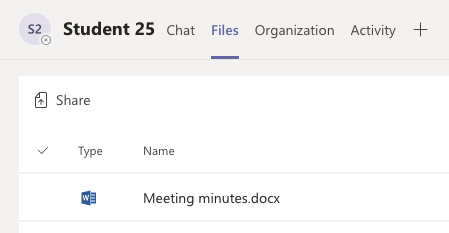
You can also upload a file by going to the Files tab of a chat and select Share.


Files uploaded in the Files tab will show up in the chat as well.

Limits
Number of file attachments per message - 10, but you can always upload 10 more in additional messages. The Files tab also limits the total number of uploads to 10 files through both upload and drag and drop options. The max file size for an individual file is 15GB.
Accessing chat files outside of Microsoft Teams
Files that you share in chat are stored in OneDrive for Business in a folder named Microsoft Teams Chat Files. These files are shared with the participants in the chat at the time of upload but will also be accessible by future participants when added to the group chat.

Here's the downside- ALL chat files are stored in the same folder!
While this makes it easy to share the same file across multiple chats it also means you'll need to consider renaming files before uploading and sharing across different chats.
Each time you upload a file to share with a previously used file name you'll need to decide the following:
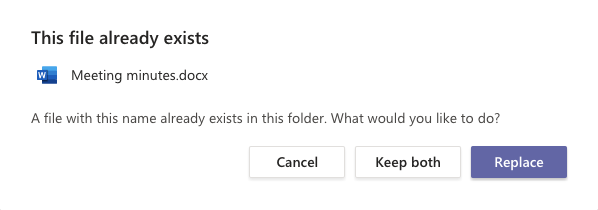
Replace - overrides the existing version by adding an updated version to the file's version history but does not remove the existing version.
Keep both – keeps both files but appends the file name with a number (auto-incremented)
ex. Meeting Minutes > Meeting Minutes (1)
Cancel - you can also cancel the upload, rename the file, and try to upload again.
Watch out here, this is an area where files tend to "disappear" on end users. Replace appends the file's version history, simultaneously storing the previous version of the file as well as the current version. The most recent version then becomes the default. Replace overrides previous edits made to the file displaying the default when the file is accessed. In the event the file is shared across multiple chats any changes are this affects files reshared across multiple chats.
Permissions
When sharing a file in Teams chat most users don't give any thought to permissions, and why would they - Teams is designed to simply work, right? Teams brings communication, collaboration, and content to the user. Upon closer inspection Teams chat files are stored in OneDrive for Business and shared with chat participants with Direct Access.

Direct Access is loosely defined as “the people and groups that have been given direct access to this item.” Yes, that’s not clear and doesn’t really explain Direct Access.
Direct Access in OneDrive for Business is like managing permissions in SharePoint - groups, permission levels, and permissions. When you assign someone Direct Access you are assigning a user permissions directly to the file or folder, much like assigning a permission level directly in a SharePoint site to either the site or an object in the site. In this case they’ll have edit or view permissions on the file.
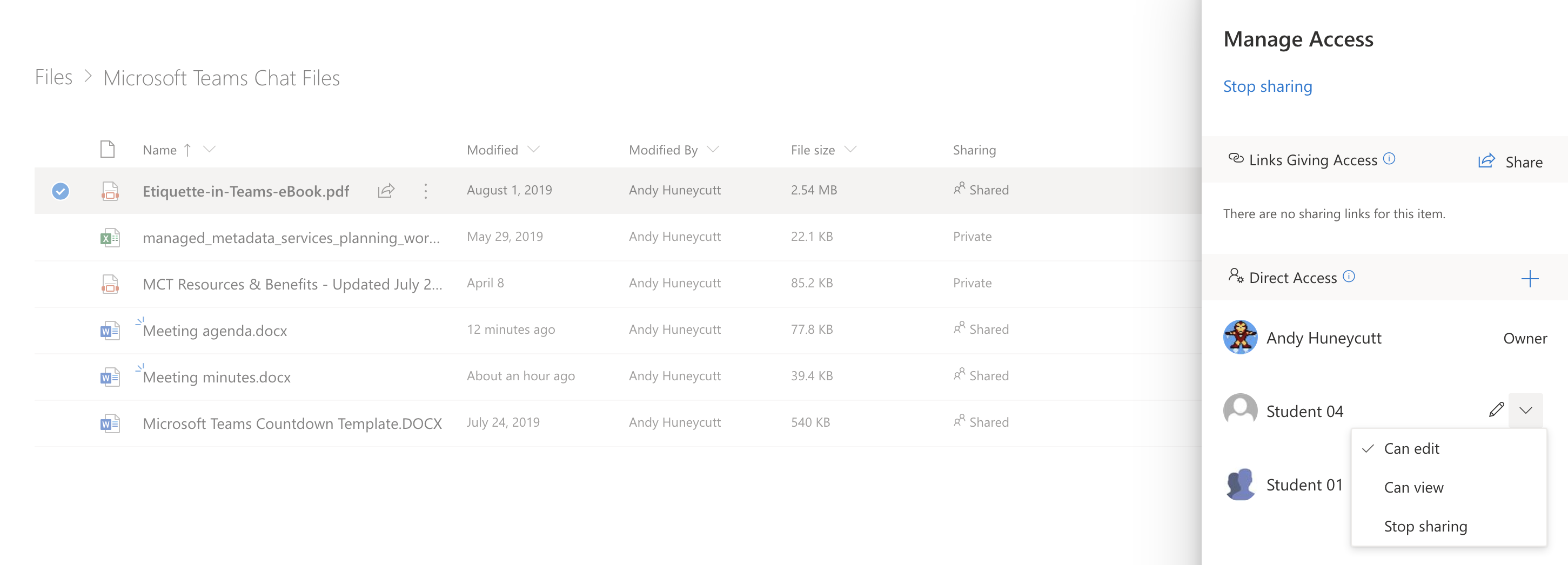
Allow me to remind you and the following:
Best practices for authorizing user access to SharePoint:
- Don’t assign permissions directly to individual users. Instead add user as member of appropriate SharePoint group.
- Don’t grant permissions (to some securable object) via assigning a permission-level directly to an individual user. Instead, always grant individual user permissions by selecting a SharePoint group to add them into. Then, the user simply inherits the permission-level of their group membership.
Did Teams just break best practice for authoring user access? Yes! Not only are files shared with others via Direct Access, but now managing access to chat files will be more difficult, and because the file is stored in OneDrive for Business it will be the owner’s responsibility.
Deleting chat messages and files
If you try to remove a file in Teams Chat, you’ll quickly discover there’s no delete option for the file itself.
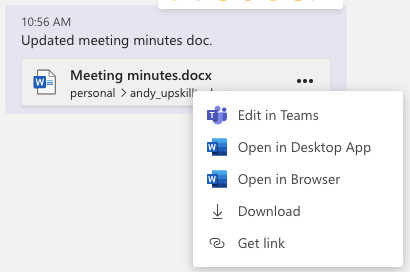
There’s no option in the Files tab to delete a file either.

The message can be deleted and in turn the file is removed from the chat.
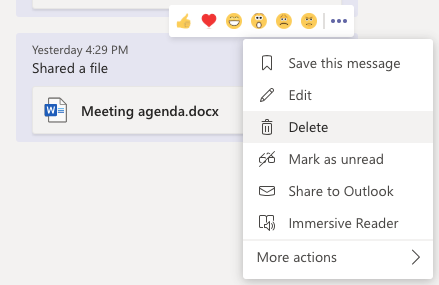
Deleting a message will also remove from the Files tab.
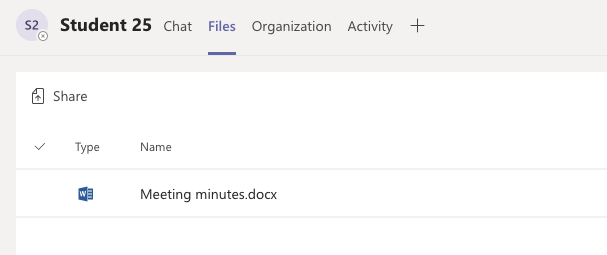
While the file is removed from the message and the Files tab in Teams, it's not deleted nor is it unshared with the other chat participants. The file can be accessed in OneDrive for Business in the Shared section.

To truly remove access, you would need to remove Direct Access in OneDrive for Business.
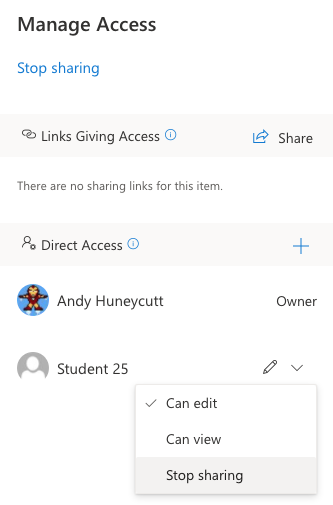
Conclusion
There’s much to unpack once you scratch below the surface when sharing files in Microsoft Teams Chat. Sharing files is simple, it’s only when you need to manage files that you must navigate the nuances of Microsoft Teams. All Chat files are accessible in the chat and files tabs as well as in OneDrive for Business. Deleting files takes more effort as files need to be deleted in OneDrive for Business or the Direct Access to the file removed.





Obviously you have an opinion, so share it!